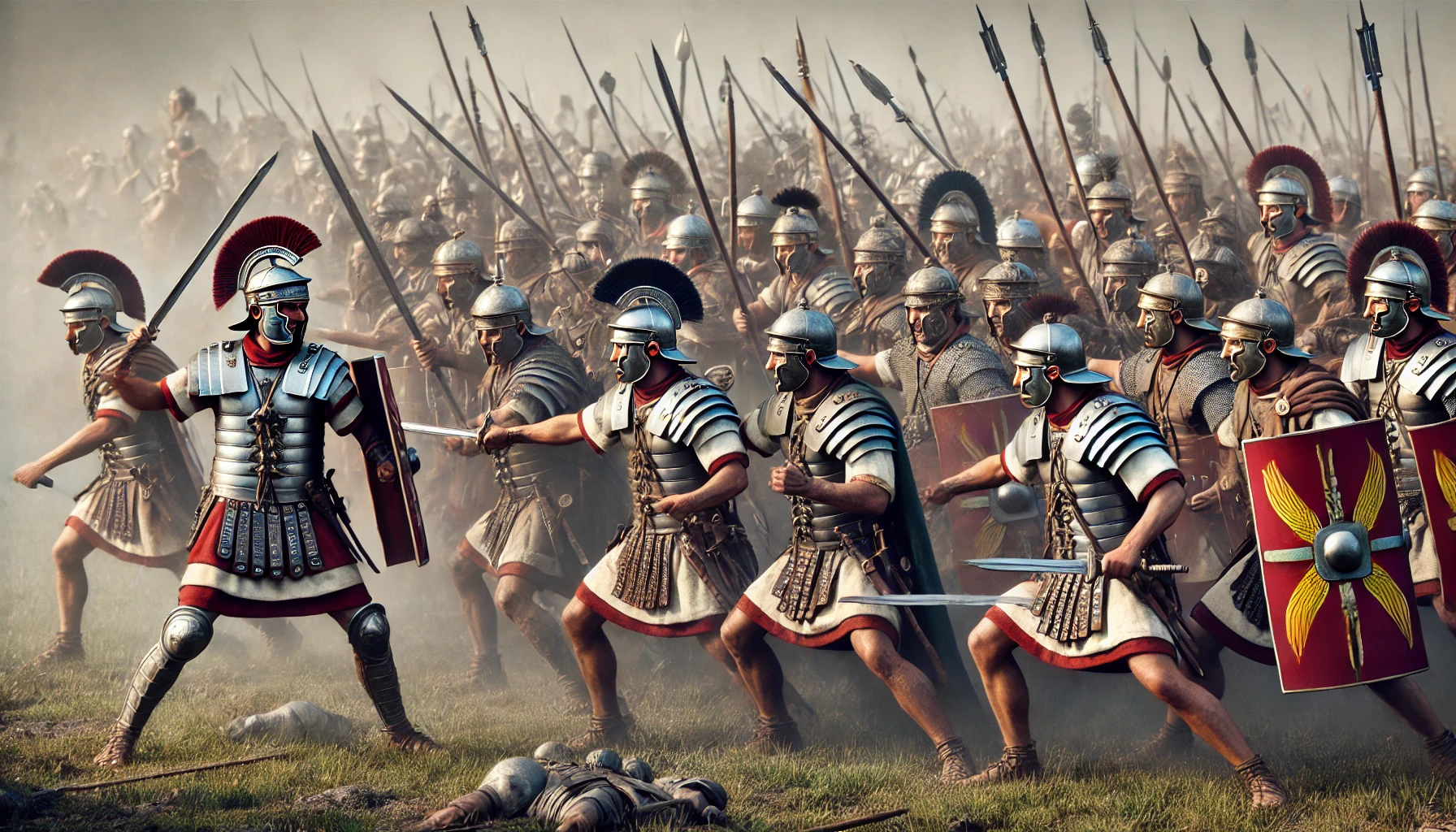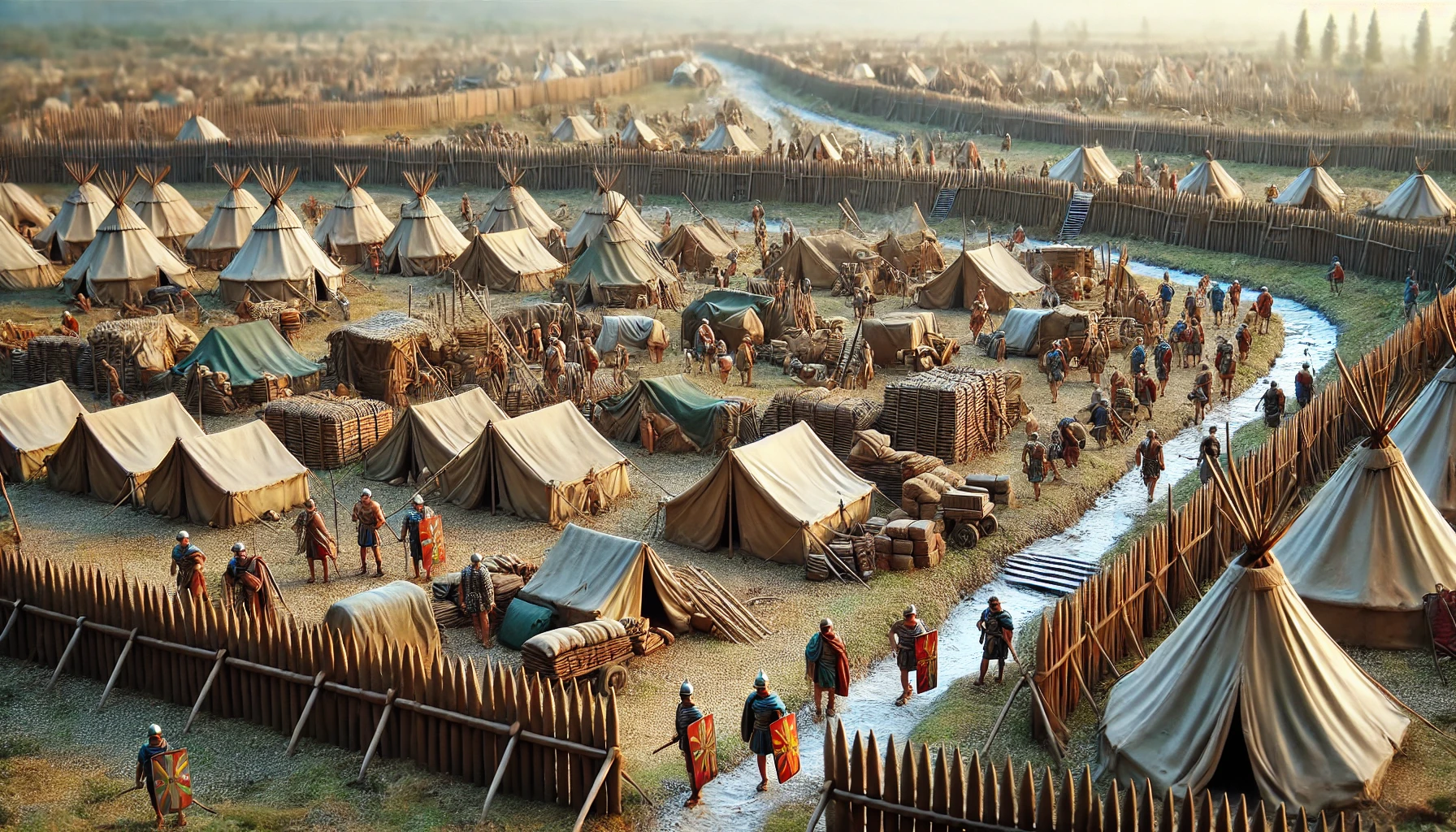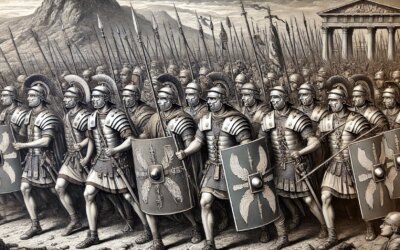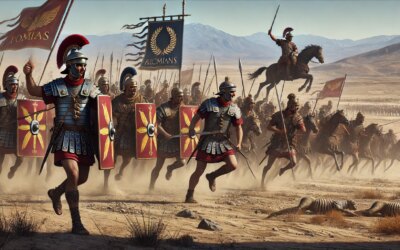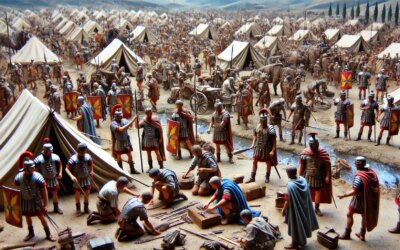Introduction
The Roman legion was the most formidable military force of the ancient world. Through superior organization, advanced tactics, and strict discipline, Rome expanded its influence across Europe, North Africa, and the Middle East. This article explores how the Roman legions fought, the strategies they employed, and why they remained dominant for centuries.
The Structure of the Legion
A fully assembled Roman legion consisted of around 4,800 to 5,000 soldiers, divided into ten cohorts. Each cohort was further broken down into centuries, led by centurions who enforced discipline and coordinated battlefield maneuvers. The soldiers, known as legionaries, were equipped with:
- Gladius: A short sword optimized for thrusting in close combat.
- Scutum: A large rectangular shield that provided excellent defense.
- Pilum: A heavy throwing spear designed to disable enemy shields.
- Segmented armor: Later periods introduced lorica segmentata, which offered superior protection and flexibility.
Battle Tactics and Strategies
The Roman legion was highly adaptable, using formations that countered different enemy tactics. Some of the most famous battle strategies included:
- Testudo (Tortoise Formation): Legionaries locked their shields together to form an impenetrable barrier, ideal for advancing under heavy missile fire.
- Triplex Acies: A three-line battle formation where fresh troops could rotate in to replace fatigued soldiers, ensuring continuous combat efficiency.
- Encirclement Tactics: Rome often used flanking maneuvers to trap and overwhelm enemy forces.
Famous Battles and Campaigns
The Roman legions proved their effectiveness in countless engagements. Some notable battles include:
- Battle of Cannae (216 BCE): Despite suffering a devastating loss to Hannibal, Rome’s ability to rebuild its legions and continue the war demonstrated its resilience.
- Siege of Alesia (52 BCE): Julius Caesar’s strategic brilliance led to the defeat of the Gallic chieftain Vercingetorix, securing Gaul for Rome.
- Battle of the Teutoburg Forest (9 CE): A rare Roman defeat, where Germanic tribes ambushed and annihilated three legions, highlighting the dangers of unfamiliar terrain.
The Decline of the Legion System
While the Roman legion remained a dominant force for centuries, internal corruption, economic struggles, and external pressures weakened its effectiveness. By the fall of the Western Roman Empire in 476 CE, the traditional legionary structure had largely disappeared, replaced by mercenary forces and fragmented military commands.
Conclusion
The Roman legion was the backbone of Rome’s military success, combining discipline, strategic brilliance, and technological innovation. Its legacy lives on in modern military organization and tactics, proving that Rome’s influence extended far beyond its empire’s borders.

